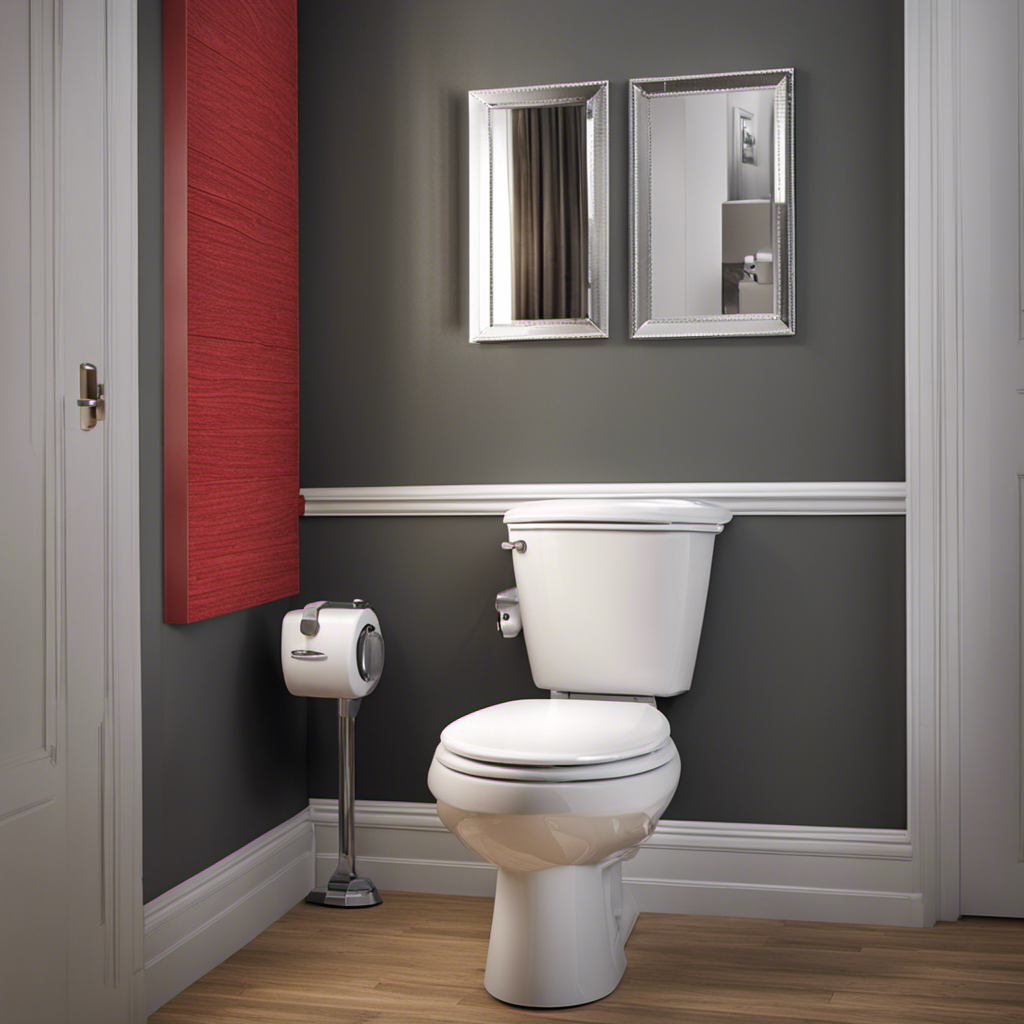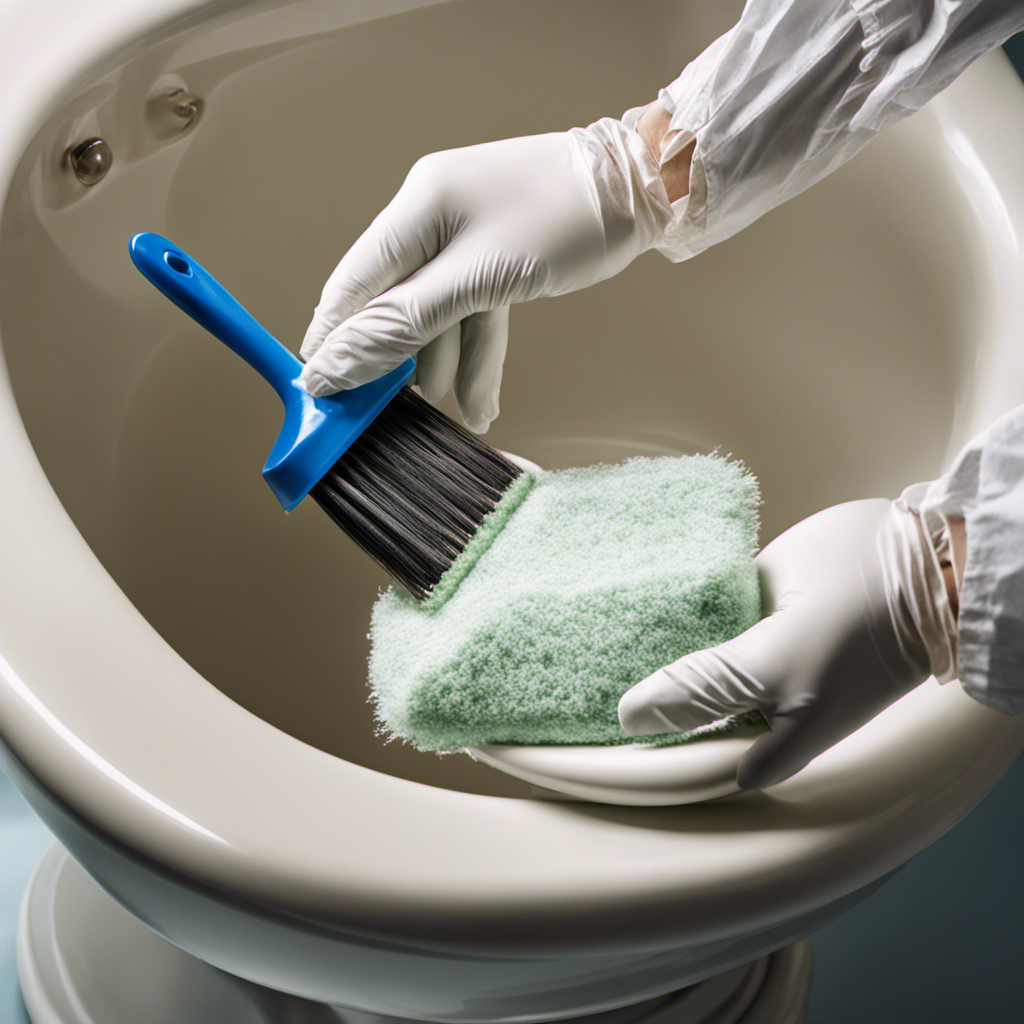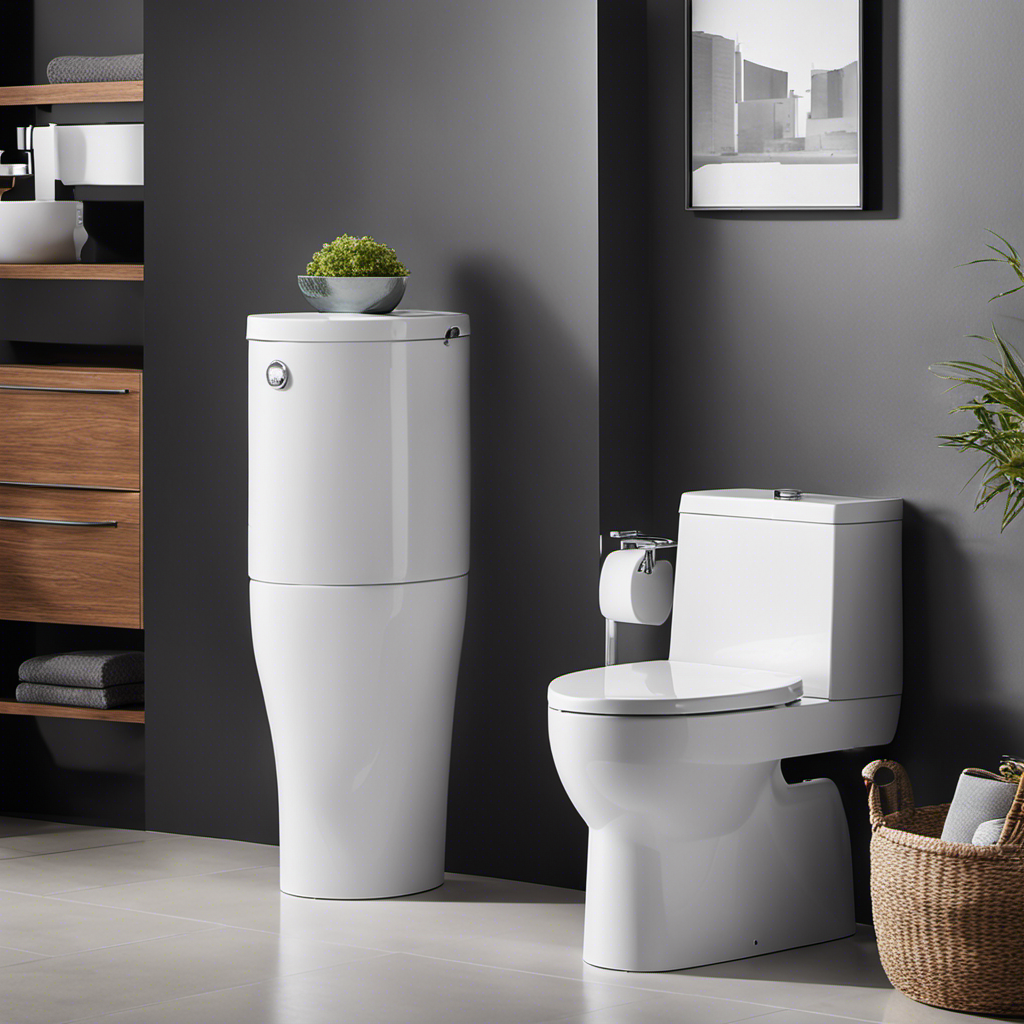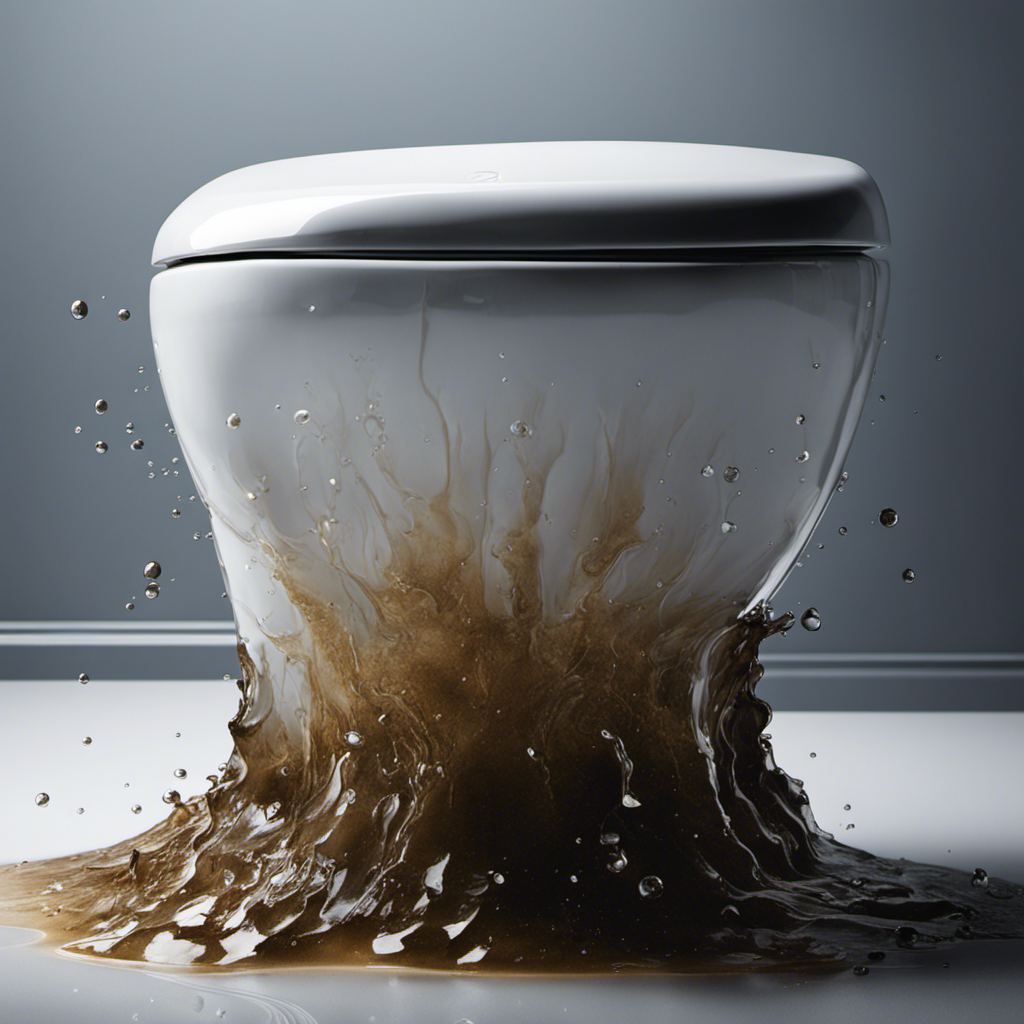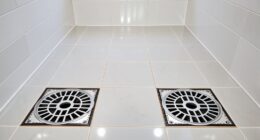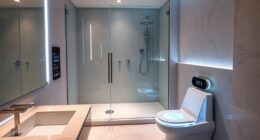As a homeowner, I know how frustrating it can be to find the perfect replacement toilet, only to realize it doesn’t fit properly. That’s why it’s crucial to measure for a replacement toilet accurately.
In this article, I’ll guide you through the step-by-step process of measuring for a new toilet, ensuring a seamless installation. From understanding toilet rough-in measurements to calculating clearance space, we’ll cover all the details you need to know.
Let’s get started!
Key Takeaways
- The toilet rough-in measurement should be taken from the wall to the center of the bolt holes, not the center of the drain.
- The distance between the bolt holes on the current toilet should be measured accurately for spacing requirements.
- The height of the toilet flange should be around 1/4 inch above the finished floor level.
- Adequate clearance space of 1-2 inches should be considered between the toilet tank and the wall for proper installation, maintenance, and airflow.
Understanding Toilet Rough-in Measurements
Understanding toilet rough-in measurements is crucial when determining the correct size toilet for your bathroom. Many people have common misconceptions about toilet rough-in measurements, which can lead to purchasing the wrong size toilet or facing installation issues.
One common misconception is that the rough-in measurement refers to the distance between the wall and the center of the toilet drain. However, it actually refers to the distance between the wall and the bolt holes on the floor.
To accurately measure toilet rough-in for a replacement, follow these tips. First, measure from the wall to the center of the bolt holes. Second, ensure that your measurement is precise by using a tape measure or ruler. Lastly, double-check your measurement to avoid any mistakes.
Measuring the Distance Between the Bolt Holes
To get accurate measurements, start by checking the distance between the bolt holes on your current toilet. This is an important step when measuring for a replacement toilet.
Using a measuring tape, carefully measure the center-to-center distance between the two bolt holes. Make sure to record this measurement accurately, as it will determine the spacing required for your new toilet.
Additionally, it is crucial to determine the height of the toilet flange. The flange is the piece that connects the toilet to the drain pipe. Measure from the floor to the top of the flange to ensure that the new toilet will fit properly.
Determining the Height of the Toilet Flange
Check if the height of your flange is suitable for the new toilet by measuring from the floor to the top of the flange. This step is crucial to ensure a proper fit and prevent any future issues. Flange installation techniques can vary, but the height should typically be around 1/4 inch above the finished floor level. Common issues with toilet flange height include a flange that is too high or too low. If the flange is too high, the toilet may rock or leak. If it is too low, the toilet may not sit flush with the floor, causing instability. To determine the flange height, use a tape measure or ruler to measure from the floor to the top of the flange. Refer to the table below for a visual representation of the recommended flange height.
| Flange Height (inches) | Suitable for New Toilet? |
|---|---|
| 1/4 | Yes |
| 1/2 | Yes |
| 3/4 | Yes |
| 1 | Yes |
| 1 1/4 | No |
Calculating the Clearance Space for the Toilet Tank
The clearance space between the toilet tank and the wall should be at least 1-2 inches to allow for proper installation and maintenance.
When selecting the right toilet size, it is crucial to consider the clearance requirements. This ensures that the toilet fits properly in your bathroom and provides enough space for easy access and repairs.
To calculate the clearance space, measure the distance between the back of the toilet tank and the wall. This measurement should be at least 1-2 inches to allow for adequate airflow and prevent any damage to the tank or wall.
Additionally, this clearance space allows for easier cleaning and maintenance of the toilet.
Once you have determined the clearance space, you can proceed to check the overall dimensions for a proper fit.
Checking the Overall Dimensions for a Proper Fit
Make sure you take into account the overall dimensions of the toilet to ensure it fits properly in your bathroom. When measuring for a replacement toilet, it is crucial to have adequate space for proper installation.
Begin by measuring the rough-in distance, which is the distance from the wall behind the toilet to the center of the floor drain. This measurement should be around 12 inches, but it can vary.
Next, measure the width of the toilet bowl, including the tank if it is one-piece. Consider the height of the toilet as well, ensuring it is comfortable for you to use.
Finally, measure the depth of the toilet to make sure it doesn’t protrude too far into the room.
Taking accurate measurements will help you find the perfect toilet for a seamless and proper fit in your bathroom.
Frequently Asked Questions
How Do I Choose the Best Toilet Seat for My Replacement Toilet?
To choose the best toilet seat for my replacement toilet, I consider the materials and design. I look for durable materials like plastic or wood and a design that fits my bathroom aesthetic.
Can I Use the Same Water Supply Line for My New Toilet?
Yes, you can usually use the same water supply line for your new toilet. However, it’s important to check if the toilet flange is compatible and if any modifications are needed. Consider the additional toilet installation cost for any necessary changes.
What Is the Average Lifespan of a Toilet?
The average lifespan of a toilet can vary depending on usage and maintenance. Signs of wear include cracks, leaks, and frequent clogs. It’s important to monitor these indicators to determine if a replacement is necessary.
Should I Hire a Professional Plumber to Install the Replacement Toilet?
I can handle the toilet installation steps myself, but hiring a professional plumber ensures a precise and efficient job. It’s a personal choice between DIY and professional installation, depending on your comfort level and budget.
Are There Any Specific Building Codes or Regulations for Toilet Installation That I Should Be Aware Of?
There are specific building code requirements and toilet installation guidelines that one should be aware of. It’s important to follow these regulations to ensure a safe and proper installation.
Conclusion
In conclusion, measuring for a replacement toilet may seem daunting, but with the right information, it can be done easily.
First, understanding the toilet rough-in measurements is crucial. This measurement refers to the distance between the wall and the center of the toilet flange. It is usually around 12 inches, but it can vary.
Next, measuring the distance between the bolt holes is important. This measurement determines the size of the toilet seat and ensures that it will fit securely on the toilet bowl.
Determining the height of the toilet flange is another important step. This measurement ensures that the toilet will sit at the correct height and align properly with the drainpipe.
Calculating the clearance space for the toilet tank is also necessary. This measurement ensures that there is enough space between the toilet tank and any nearby walls or fixtures.
Lastly, checking the overall dimensions of the toilet is essential for a proper fit. This includes measuring the width, depth, and height of the toilet to ensure that it will fit comfortably in your bathroom.
So, just like a skilled craftsman measuring carefully for a masterpiece, take your time and measure accurately for a toilet that fits perfectly in your bathroom.
